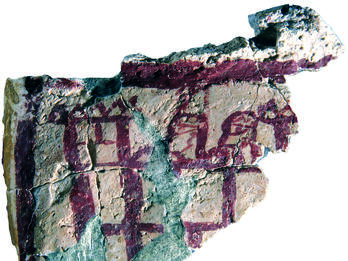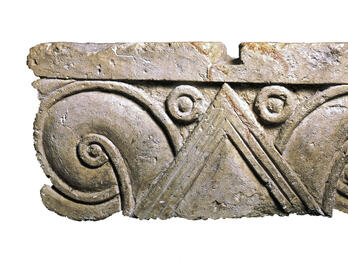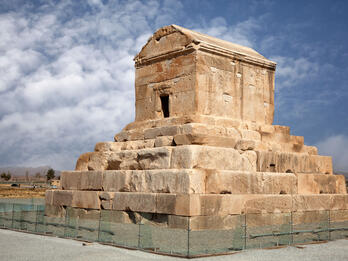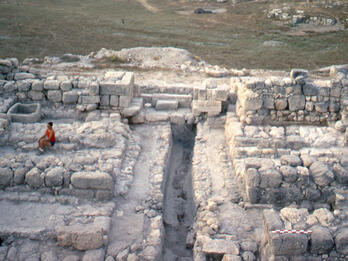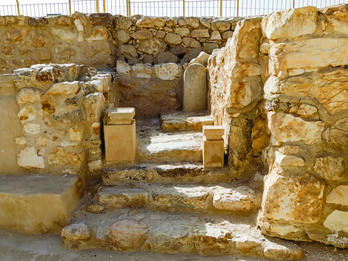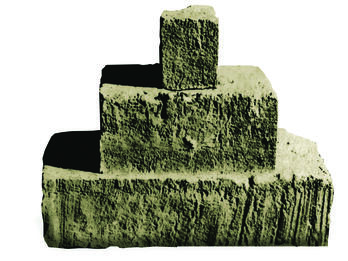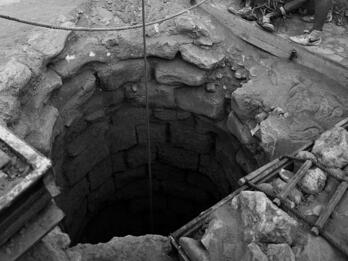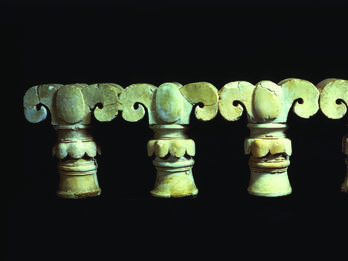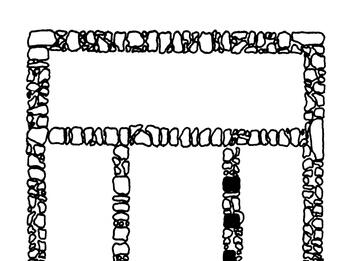Showing Results 1 - 10 of 17
Restricted
Image
These fragments of a mural from Kuntillet Ajrud show two human heads, facing left and looking out over their city’s wall, which is flanked by towers. The mural may have been part of a military scene…
Places:
Kuntillet Ajrud, Land of Israel (Kuntillat Jurayyah, Egypt)
Date:
Iron Age II, Late 9th–Early 8th Century BCE
Subjects:
Categories:
Restricted
Image
Palace façade in Assyrian relief, Khorsabad. This illustration is based on an Assyrian relief from the palace of Sargon II (reigned 722–705 BCE), Khorsabad. The relief shows pillars topped by volute…
Places:
Dur-Sharrukin, Assyria (Khorsabad, Iraq)
Date:
Iron Age II, 8th Century BCE
Subjects:
Categories:
Restricted
Image
The palm and the palmette are common iconographic elements in ancient Near Eastern art, appearing, for example, in ivory decoration (see Ivory and Bone Carvings and Engraved Seashells) and in Assyrian…
Places:
Ramat Rahel, Land of Israel (Ramat Rahel, Israel)
Date:
Iron Age II, Late 8th–Early 7th Century BCE
Subjects:
Categories:
Public Access
Image
Tomb of Cyrus, King of Persia (reigned 559–530 BCE). The tomb stands in Cyrus’ capital, Pasargadae (near today’s Shiraz, Iran). See the Cyrus Cylinder for Cyrus’ role in the return of Judeans from…
Places:
Pasargadae, Iran (Fars, Iran)
Date:
530 BCE
Subjects:
Restricted
Image
City gate, Gezer, Early Iron Age (1200–980 BCE). This gatehouse complex had benches for participants in legal procedures and other public affairs. In the book of Ruth, Boaz goes to the city gate in…
Places:
Gezer, Land of Israel (Tel Gezer, Israel)
Date:
Early Iron Age
Subjects:
Categories:
Restricted
Image
This photo shows a reconstruction of the cella, or inner sanctum, of the Arad sanctuary as it is thought to have appeared in its last phase. At the rear stands a 35-inch-tall (90 cm) pillar of…
Places:
Arad, Land of Israel (Tel ‘Arad, Israel)
Date:
Iron Age IIA(?)–IIB, 9th (?)–8th Century BCE
Subjects:
Categories:
Restricted
Image
Several stone crenellations, like the one shown in this computer reconstruction, with each of the upper layers shorter and narrower than the one below, were found broken into pieces at the palace at…
Places:
Ramat Rahel, Land of Israel (Ramat Rahel, Israel)
Date:
Iron Age II, Late 8th–Early 7th Century BCE
Subjects:
Categories:
Restricted
Image
Well at Beersheba. This well was in use during the ninth and eighth centuries BCE and again in the Persian and Hellenistic periods (6th–2ndcenturies BCE). It is found just outside the city gate. The…
Places:
Beer Sheva, Land of Israel (Tel Be'er Sheva, Israel)
Date:
Biblical Period
Subjects:
Restricted
Image
Palm imagery is a common motif in decorative architectural elements like window balustrades. Each of the four columns in this partial restoration from the biblical period is six inches in diameter and…
Places:
Ramat Rahel, Land of Israel (Ramat Rahel, Israel)
Date:
Iron Age II, Late 8th–Early 7th Century BCE
Subjects:
Categories:
Restricted
Image
“Four-room” house plan, Iron Age II. The typical Israelite dwelling was a rectangular or square house of between roughly 500 and 1,200 square feet (50–110 sq m). It is often called a “four-room” or…
Places:
Land of Israel (Israel)
Date:
Iron Age II, 10th–6th Century BCE


